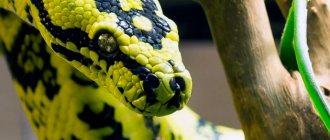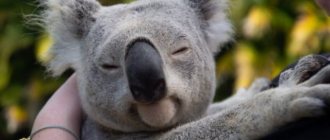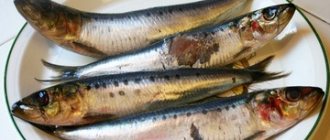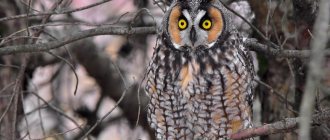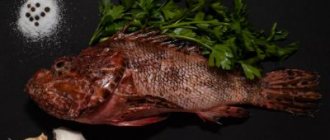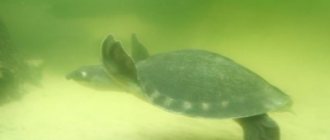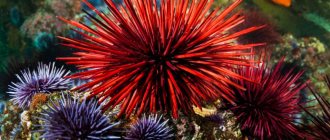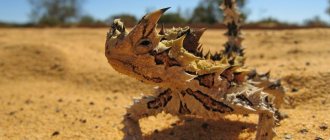The axolotl is an amazing and rare representative of living amphibian creatures with the unusual appearance of a miniature dragon. It is called an aquatic or aquarium dragon, a water salamander and even a monster. The unique appearance inspired animators to create images of cartoon characters. In the wild, the axolotl is considered an endangered species, but it is actively bred in captivity. But those who want to get an unusual pet will have to create ideal living conditions for it.
Fish with paws
Yes, this cute aquatic creature actually has limbs, as it is actually a neotenic salamander larva. It is customary to call this creature a water dragon, but its scientific name is axolotl or Ambystoma Mexicanum.
You can get this miracle of nature at home by placing it in an aquarium with appropriate conditions. Moreover, their population does not suffer from being in captivity, so their number has increased sharply in recent years. For scientists, the axolotl is of particular value because it has an extraordinary ability to regenerate parts of its body.
Just don’t forget that the water dragon comes from the highlands, so warm water can ruin its health and even kill it. The optimal temperature for keeping is 18-20°C. In addition, the bottom of the aquarium must be covered with a thick layer of sand, which is an ideal soil for ambystoma.
Axolotl and its features
The water dragon lives in nature only in Mexico, at an altitude of 2290 meters. It is a squat salamander (or ambystoma larva), the length of which varies from 90 to 350 millimeters. Males have a more elongated tail. There are two varieties of ambisto:
- Neotenic. This is the water dragon (which is a larva). It has developed gills and prefers to wander along the bottom of canals and lakes. Puberty begins when they are still very small in size, so axolotls no longer grow any further.
- Ground. A fully formed salamander with reduced gills.
These pawed fish have a row of small teeth that help them hold onto their prey. Its gills are three processes located on the sides of the head. The color of an axolotl can be black, brown, white, and even pink, but it is completely unprofitable to be light, since predators never sleep. In an aquarium, water dragons can live up to 10 years, but in their natural habitat - up to 20.
How to choose?
Before buying an aquarium labeo fish, you need to decide on the variety of your future pet. Among them there are quite large individuals that require a spacious 150-liter tank. If it is not possible to acquire such a large aquarium, it is better to pay attention to smaller species that grow up to 10-15 cm. For example, silver, green (Thai) or albino.
You also need to remember about the difficult, quarrelsome nature of the Labeo. If you plan to introduce them into a community aquarium, then it is better to choose silver or harlequins.
To choose healthy fish you need to observe their behavior. Normally, labeos are quite active and mobile. They should move freely throughout the aquarium. And immobility or lethargy indicates that the fish is sick or old.
Axolotl in nature
It is known that with paws, in its usual habitat, it settles in the depths covered with dense vegetation. It never goes onto land, so its legs only go to the bottom of lakes and large canals. During the mating season, the axolotl attaches its eggs to water leaves and blades of grass, and then inseminates them.
Lake Xochimilco is famous for its floating gardens, which are essentially earthen mounds. And this is where fish with paws feel best. Local residents use them to grow flowers and some vegetables.
The meaning of the Mexican axolotl for the Indians
From the Aztec language, the name is translated as a water monster, and before the arrival of the Spanish conquistadors, the ancient people ate the meat of ambistoma, the taste of which resembles eel. In addition, they believed that eating fish with paws could correct many health problems.
The axolotl is a red-listed animal, as it is in danger of extinction in the wild. The habitat is very scattered and amounts to only 10 km². The exact number of animals in their habitat has not yet been established.
Fish with legs found near New Zealand
Oceanologists from New Zealand reported an unusual discovery in the Bay of Islands in the northeastern part of the island. People relaxing on the beach noticed a strange fish at low tide. It had a dark color, and its lower fins strongly resembled limbs designed for walking. Intrigued, the tourists sent the fish to the New Zealand Museum for identification by experts.
Museum specialists shared this information on their Facebook page, and have so far determined that the fish may
, belongs to the family of striped clown fish (or as they are called in English literature, “frogfish”, i.e. “frog fish”). Clownfish get their name because of their incredibly bright colors and strange appearance. This specimen is unique in its dark, monochromatic coloring—it is not yet clear whether it is a deviation or a previously unknown new species.
The body of clown fish is covered with processes of various shapes that resemble leaves, lichens, and sometimes wool. They are predatory fish and feed on other fish and invertebrates. Usually they wait for the victim, hiding at the entrance to some underground cave. One of the processes coming from the spine is shaped like a worm and is used by them as bait.
Another interesting fact from the life of clown fish: their jaws work faster than the jaws of any other vertebrate animal, they close almost at the speed of a rifle bullet. But the most amazing thing is that these fish can use their lower paired fins to move along the bottom. Pushing off the bottom with their fins, they seem to be taking a leisurely stroll.
One diver last year made a video with a rather “hairy” representative of clown fish, in which the bait appendage is clearly visible:
Clown fish are not the only representatives of marine fauna that have the semblance of legs. Mudskippers, fish from the goby family, closely resemble amphibians due to the presence of thickened lower fins that resemble arms. They use their fins to move along the bottom exposed at low tide, and hunt for small prey left behind by the tide. They use their tail both for jumping on land and for quickly moving through shallow water.
This amazing creature, reminiscent of prehistoric amphibians, can be perfectly kept in a home aquarium. It was the axolotl that became the prototype for the appearance of the good dragon Toothless from the cartoon “How to Train Your Dragon,” which became popular in 2010, and also inspired the creators of the fairy-tale character Luntik.
Description of the axolotl
Axolotl is not the “proper name” of the animal in question
. It belongs to the species Ambystoma mexicanum (Mexican Ambystoma), and any larva can be called Ambystoma. The fact is that this species, as well as the tiger ambystoma, is most prone to neoteny - a form of existence in the form of a larva without further metamorphosis. In Greek, “neoteny” literally means “extended youth.” The amphibian becomes an adult, can reproduce and live its entire life as a larva, which is usually called an axolotl. This is due to the peculiarities of the functioning of his thyroid gland.
This is interesting!
If you change the conditions of existence of the larva, it can undergo transformation into an adult, becoming a full-fledged adult ambystoma from an axolotl.
The word "axolotl" is borrowed from the ancient Mexican, or more precisely, Aztec language Nahuatl. It consists of two roots: “atl” - water and “xolotl” - dog. Sometimes the name is translated as “frolic in the water.”
Appearance
The axolotl looks like a fantastic dragon or even an unusual toy. Outwardly, it is a newt with a huge head, the gills of which stick out in the form of three long pubescent branches. The salamander's body consists of a head, torso and tail. The skeleton is cartilaginous tissue; they have no bones, especially the “soft” ones - young individuals.
Head
- in comparison with the elongated body, disproportionately large and expanded. The wide and flat mouth appears to be constantly smiling. It hides inconspicuous, small, but sharp teeth - with them the axolotl only holds prey, they are not intended for tearing. The eyes are small, black, shiny, like beads. The gills, like fluffy twigs, extend from the body behind the head; the larva can press them and shake them to clear adhered particles.
Torso -
narrowed, slightly flattened, streamlined. In the middle along the entire back there is a ridge - this is the fin. 16 grooves on the sides give the newt a “ringed” appearance. The skin is smooth and soft. The axolotl has 2 pairs of legs: the front ones have 4 fingers, and the back ones have 5.
Tail
- long, wide, occupies about ¾ of the entire body. The fin fold from the back extends along its entire length. It is very agile, which helps it swim quickly. Together with the tail, the larva has 50 vertebrae.
Dimensions -
The length of the axolotl ranges from 15 to 30 cm, the larva can weigh up to 300 g, the girth of the body is about 12-19 cm. Females are somewhat smaller than males, their tail is slightly shorter. Individual large males with a maximum length of 45 cm have been recorded.
Important!
The tiger ambisto larvae differ from the Mexican ones only in their flatter muzzle and less variegated, smoother body, otherwise they are almost the same.
Axolotl colors
These cute and funny creatures can be colored differently by Mother Nature. The coloring depends on the population (or artificially bred line), as well as on the conditions in which the larva lives. Including food. Axolotls are usually divided into 3 types of color.
- “Prirodniki”
is black or simply dark (gray, brown, brownish, marsh) color with spots. The pattern on the body can be different: small, large, reminiscent of a mesh. - White, but not albino -
the light color in adulthood is complemented by a patterned pattern along the back. An amphibian may not necessarily be pure white; pinkish and beige shades are often found. The gill filaments are not red, but deep pink. Eyes black or brown. - "Albs"
- without pigment. Completely white, without spots or patterns, with bright red gill processes and eyes. Among albinos there is also a golden color.
This is interesting!
As a result of crossings, axolotls are produced in a wide variety of colors. Scientists experimenting with GMOs have achieved that under a fluorescent lamp, spots and stains on the larva’s body glow.
Natural and white axolotls come in a wide variety of colors and patterns, especially those that have been bred at home or in a laboratory. In their natural environment, darker colors predominate because light-colored individuals are more vulnerable to predators and survive less well.
Lifestyle, behavior
The axolotl can breathe in different ways: gills, lungs or skin. In clean water the gills work predominantly, but in a polluted and poorly aerated environment the lungs take over and the gills partially atrophy. But when favorable conditions return, the gill “branches” grow back. Nature has endowed the larva with a strong ability to regenerate. It can restore most lost body parts - gills, fins, paws, and some internal organs. Ambist adults no longer have such a restorative ability.
Axolotls move as if in “pushes”, raking with their forelimbs. But, unlike the land ambystoma, they cannot be called nimble; they are calm and inactive. They spend most of their time at the bottom of reservoirs or aquariums, moving their tails, or “hanging” in the water column, barely moving their legs. From time to time, the “dragons” shake their gill processes to clean them. If you tap on the glass of the aquarium, the axolotl will slowly swim away.
Lifespan
In the wild, these amphibians live for about 10 years. With good care, axolotls will please their owners longer, living up to 15-20 years.
Types and colors
Both the larval form and the adult axolotl have gained popularity among fans of exotic pets, so this amphibian is divided into several varieties:
- Mexican - has a natural color that allows it to hide from predators in algae and plants.
- The white axolotl is an amphibian with light skin and dark brown eyes. As it matures, this species develops a brown stripe on its back. If a white dragon transforms into an adult ambistoma, then the color can be any.
- Albino axolotl - these representatives can be colored milky or golden, with golden spots along the body. Even after maturity, the variety retains its original color.
- Harlequin is a variety obtained as a result of genetic experiments when scientists crossed a white and brown axolotl with each other.
- Black dragon - thanks to the efforts of scientists and researchers, we managed to get a black axolotl that looks beautiful and menacing. Also among the representatives there are dragonets with a two-color color.
Interesting fact: the image of the main character of the cartoon “Luntik and His Friends” is copied from a salamander larva.
Range, habitats
In nature, the axolotl has become a very rare species. They are considered endemic because they live almost exclusively in two mountain lakes in Mexico - Cholco and Xochimailco, located in Mexico City, at an altitude of more than 2 thousand m above sea level. There, the Aztecs once built the so-called floating islands “chinampas”, and today various ornamental plants are grown on them. Perfectly irrigated, these islands and the channels between them are very convenient for axolotls and adult ambistos to live in, so they actively reproduce there.
Since the mid-19th century, domestic hobbyists and collectors have been actively breeding cute amphibians. It is not difficult to keep them in captivity, they reproduce well, are unpretentious to conditions and food, do not cause concern with their behavior, and therefore are very popular as pets.
This is interesting!
Experiments on tissue regeneration were carried out on axolotls, so quite a large number of them were raised as laboratory animals.
Criteria for choosing an aquarium
The size of the aquarium depends on how many fish you intend to keep
. Ideally, it is better to have separate containers for each axolotl, because adult salamanders interfere with each other, especially if they are of different ages. A “seasoned” male can offend a young axolotl, injure it, or even eat it.
Important!
Individuals of different sizes cannot be kept together. Only axolotls of approximately the same age and parameters can live together; they should have space.
Two young individuals together can be kept in a 50 liter container, but when they grow up, this space should be given to each of them, and it is better to keep no more than a couple of larvae in a spacious aquarium of about 80-100 liters.
Aquarium equipment
“Triton” cannot simply be thrown into the water. It is necessary to provide an environment in the aquarium that is similar to the natural one. An axolotl will not be able to live without soil, a large number of shelters, or in bright light. So, what does a caring owner need to take care of?
Priming
Mandatory, as salamanders move their paws and cling to it. Without soil, they experience constant stress, and their paws can even become covered with ulcers. Small pebbles and gravel, as well as sand, are not the best choice; axolotls can swallow them, which can create problems for their gastrointestinal tract. Take a pebble that won't fit in the axolotl's mouth.
Shelters
They will not only create a comfortable environment for your pet, but will also give the aquarium a decorative look. The number of “houses” should be greater than both in the aquarium, each larva should have a choice. Make sure that objects in the aquarium do not have sharp edges or broken edges, because the skin of “Mexicans” is very delicate. You can place in the aquarium:
- driftwood;
- ceramic houses and figurines;
- stones of different sizes;
- arches;
- pots;
- halved coconuts, etc.
What does the Luntik fish look like?
It is no coincidence that Axolotl is compared to the cartoon character Luntik. Touching creatures with a large head, small eyes and three pairs of terry external gills look like fantastic animals, and because of their wide mouth it seems that they are smiling all the time. The axolotl has translucent soft skin, a strong body and thin legs, the dorsal crest smoothly passes into the caudal swimming membrane. This is a fairly large creature: it grows up to 30 cm in length and weighs about 300 g. In nature, black, gray and brown individuals are mainly found, but aquarium axolotls can boast a variety of colors: white, pale pink, golden yellow, olive and spotted
